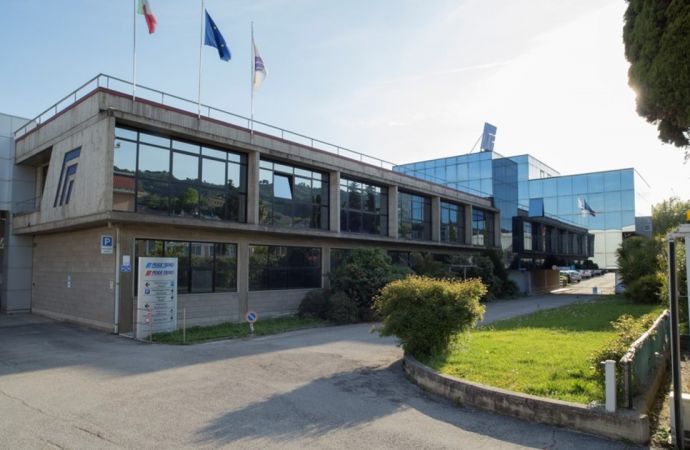GEA project in Gateshead, northeast England, uses a 6MW ammonia heat pump system for district heating.

The Gateshead Energy Centre during construction. Credit: Gateshead Council.
German manufacturer GEA has found a unique way of turning previously “dirty” energy into renewable heating.
The company has designed an ammonia heat pump that has started using the water seeping into an abandoned coal mine to create heating for a 6MW district heating network.
The old mine is located in Gateshead, near Newcastle in northeastern England, where the district heating network is also based.
The Gateshead project is GEA’s fourth or fifth ground-source heat pump in the U.K., but it is the first to take water directly from an old coal mine, said Kenneth Hoffmann, Product Manager at GEA, during a presentation at the ATMOsphere Europe conference, which took place online September 28-29. ATMOsphere Europe was organized by ATMOsphere (formerly shecco), the publisher of Ammonia21.com.
When finalized, the system will handle 140m3 (4,944ft3) of 15°C (59°F) water from the mine per hour, and the water is cooled down by around 6°C (10.8°F) before being pumped back into the mine.
Gateshead is an area with a long history of coal mining, with the first recorded efforts dating to 1344. In 1625, the town was the world’s largest coal supplier, mining 400,000 metric tons per year. The last mines in the area were closed down in 1926.
“This was before the industrial revolution, meaning all this coal has been used for heating up homes, and that’s what makes this interesting,” explained Hoffmann.
“The coal mines are now disused, and they are filled up with water that has seeped into the mines,” Hoffmann added. “We can now use energy from these coal mines again — instead of having dirt, dust and CO2 emissions, we are now creating clean energy from the water we can pump out of the coal mines.”
The U.K. has a many old coal mines, and they are very well mapped out by the British authorities, meaning that it can be calculated quite precisely how much water flows into the mines, Hoffmann explained. The is important because ground source drilling is often a “bit of a lottery,” and you don’t know how much you get. Here GEA knows exactly how much water they can pump up for the heat pump.
Using water from old coal mines is therefore a technology with a lot of potential in the U.K. “A lot of the mines are already pumping out the water seeping in, because if the water level becomes too high, it can contaminate the fresh drinking water, so it’s actually better to remove the heat before you pump this water out into the rivers,” Hoffmann said.
Growing project
The Gateshead district heating project, designed to serve the town center, is funded and owned by the Gateshead Council, and operated by the Gateshead Energy Council, a public limited company wholly owned by Gateshead Council.
The project started in 2015, when it was based on CHP (combined heat and power) gas engines and included a number of council homes. It has since been expanded to include private homes. The hope is that by 2030, 17% of homes in the area and 24% of non-industrial public buildings, will be added to the network.
This should equal 12GWh of energy, which is a lot more than the original CHP engines can provide, and that is why GEA was tasked with coming up with a sustainable solution for the second phase of the project.
GEA has installed two heat pumps with four ammonia screw compressors in total, including two low-stage and two high-stage compressors, for a total of 6MW of capacity. The system has a COP of 2.91. The two-stage solution heats the water in series to the 80°C (176°F) needed for this district heating network. The return water temperature is 65°C (149°F).
“The choice to go with ammonia was easy,” Hoffmann said, as the government requires the COP to be at least 2.9 to qualify for subsidies, and no other refrigerant was able to achieve this within the design parameters.
The choice to go with ammonia was easy.”
– Kenneth Hoffmann, GEA
Want to find out more, or have something to say about this story? Join the ATMO Connect network to meet and engage with like-minded stakeholders in the clean cooling and natural refrigerant arena.
Related stories



_1522327086.png)
